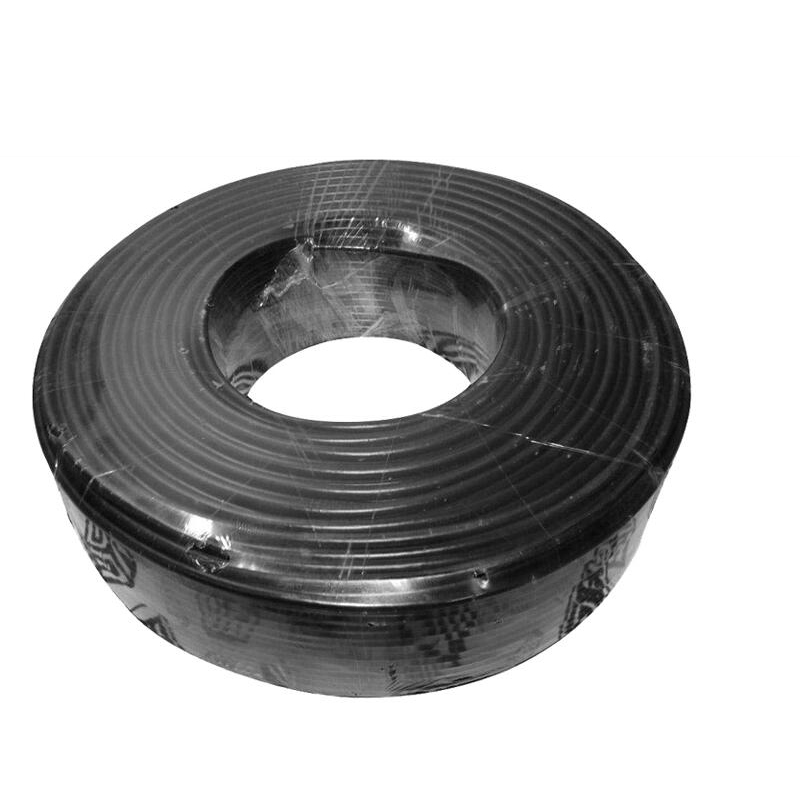Search by posts
Product category
News
 By Admin
By Admin
What are the recommended installation practices for minimizing signal loss in RG58 cable installations?
The following are installation practices to minimize signal loss in RG58 cable installations:
Proper Connector Installation: Ensure the cable is meticulously stripped, using high-quality tools to maintain precise dimensions. Employ torque wrenches with fine-tuned settings to achieve not only optimal tightness but also uniform compression. Utilize a magnifying glass to visually inspect connectors for any imperfections or anomalies, and conduct continuity tests to confirm a flawless connection.
Avoid Sharp Bends: Implement cable routing that adheres to the cable's bend radius with surgical precision. Utilize advanced simulation software to model and predict the impact of bends on signal quality. Employ specialized tools such as cable bending jigs to guarantee bends are within acceptable limits.
Use Quality Connectors: Select connectors with not just adequate but superior construction, ensuring they surpass RG58 specifications. Opt for connectors with advanced features like self-locking mechanisms for enhanced stability. Conduct microscopic examinations of connector surfaces to confirm the absence of any defects or irregularities.
Reduce Cable Length: Employ signal loss calculators with cutting-edge algorithms to precisely determine the optimal cable length for minimal attenuation. Utilize cable length adjustment mechanisms, such as variable attenuators or precision trimming tools, to fine-tune lengths to perfection.
Proper Termination: Utilize electron microscope technology to scrutinize terminations at the nanoscale, ensuring an unparalleled level of precision. Implement automated termination systems with AI-driven quality control to eliminate any variations. Utilize specialized termination materials, such as nano-coated solder, for enhanced durability.
Shielding Integrity: Implement real-time monitoring systems that provide instant alerts in the event of any breach in shielding integrity. Use advanced electromagnetic field mapping tools to identify potential weak points and reinforce them preemptively. Employ automated shielding continuity checks during installation and periodically thereafter.
Avoiding Interference: Conduct a comprehensive electromagnetic interference (EMI) risk assessment using state-of-the-art scanning equipment. Employ machine learning algorithms to predict potential interference sources based on historical data. Utilize adaptive shielding materials that dynamically adjust to changing interference patterns.
Use Cable Supports: Employ robotic cable support systems equipped with sensors to dynamically adjust support positions based on cable weight distribution. Implement self-healing cable support materials that adapt to environmental conditions, ensuring constant and optimal support. Utilize predictive analytics to schedule preemptive maintenance of cable support systems.
Secure Cable Routes: Utilize self-repairing cable jackets that automatically mend small damages to prevent further degradation. Implement smart routing algorithms that dynamically adjust cable routes based on environmental changes. Utilize self-adjusting cable clamps that adapt to cable movements and vibrations.
Temperature Considerations: Employ self-regulating cable insulation that adjusts its thermal properties based on temperature fluctuations. Utilize advanced materials with predictive temperature resistance, allowing for optimal cable performance across a wide range of environmental conditions. Implement real-time temperature monitoring systems with automated adjustments.
Grounding: Utilize AI-driven grounding systems that dynamically adjust based on real-time measurements of ground potential. Implement self-diagnosing grounding connections that proactively identify and rectify potential issues. Utilize predictive analytics to forecast grounding system performance over time.
Regular Inspections: Implement drone-based inspection systems equipped with high-resolution cameras and sensors for comprehensive cable inspections. Utilize AI algorithms to analyze inspection data and predict potential points of failure. Implement blockchain technology for secure and transparent record-keeping of inspection data.
3C-2V RG58 cable

3C-2V RG58 cable

Recommended products
-
Omni directional TV antenna HD-119A
-
High gain amplified antenna HD-118
-
Indoor&outdoor antenna HD-120
-
Paper antenna HD-110
-
Amplified indoor antenna UR-012FA
-
Omnidirectional TV antennas UR-012B
-
Omni directional antenna UR-012C
-
Magnet indoor antenna UR-012D
-
Antenna for rca UR-312
-
HD TV indoor antenna for rca UR-312
-
Small indoor antenna HD-020S
-
HD TV digital indoor antenna RFC-02

 English
English Español
Español











